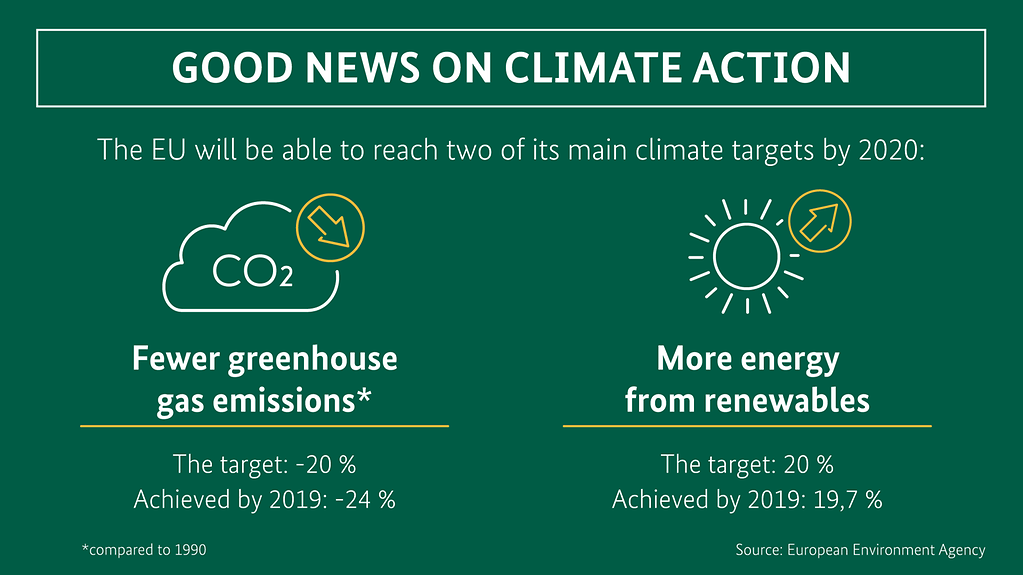The goal: climate action - The team: Europe
Climate action only works as a team. We can only keep global warming down to significantly under 2° Celsius, or better still to under 1.5° Celsius, in time if as many states, private companies and individuals as possible are involved. By 2050 Europe is to become the first continent that emits only unavoidable greenhouse gases and completely offsets these few remaining emissions.
2 min reading time

The German government supports the goal of making Europe the world's first climate-neutral continent by 2050.
Good news on climate action
The EU will be able to reach two of its main climate targets by 2020:
Fewer greenhouse gas emissions
- The target: 20 per cent reduction
- Achieved by 2019: 24 per cent reduction
More energy from renewables
- The target: 20 per cent
- Achieved by 2019: 19.7 per cent
Source: European Environment Agency
Photo: Bundesregierung
During Germany’s Presidency of the Council of the European Union we intend to work hard to wind up consultations in the Council on the draft for a European Climate Law, which is to make it legally binding for the European Union to achieve climate neutrality by 2050.
Ambitious interim goals are needed along the way. Commission President Ursula von der Leyen has proposed raising the current emission reduction target of a minimum of 40 per cent of the 1990 levels to a minimum of 55 per cent. To this end, the German Presidency plans close dialogue with member states, so that a new target can be adopted before the end of the year.
EU contributes to Paris Agreement on climate change
In the Paris Agreement on climate change, states around the world have undertaken to set themselves increasingly ambitious targets for the reduction of greenhouse gas emissions, in order to stem climate change. To achieve this, they stipulate Nationally Determined Contributions. In the European Union, member states agree on a common contribution.
All states parties to the Paris Agreement on climate change are still called on to enhance their Nationally Determined Contributions for the period up to 2030 in spite of the challenges posed by the COVID-19 pandemic. These challenges in no way change our shared responsibility for limiting global warming. Alignment with the Paris Agreement on climate change is essential to help us emerge from the coronavirus crisis and to ensure we are better equipped to cope with any future crises. The EU is the largest donor community with respect to the financing for climate action and adaptation to climate change in poorer countries that has been agreed at international level. Again, Germany provides the largest share within the EU.
The EU’s climate policy instruments
The European Commission is devoting itself to the Green Deal as its policy strategy for climate action in the European Union. In order to realise this strategy, the Commission has announced many proposals. But the EU is already doing a great deal. Since 2005, the EU has had an emissions trading system in place. It sets a price for every tonne of carbon dioxide (CO2) emitted by industry and energy companies as well as inner-European aviation, thus creating incentives to use less fossil fuel.
For the sectors that are not covered by EU emissions trading, in particular transport, buildings and agriculture, the EU’s Effort Sharing Regulation sets greenhouse gas emission reduction targets for every EU member state. States failing to reach their targets are required to buy up emission allocations (entitlements to emit greenhouse gases) from other EU member states that no longer need them.